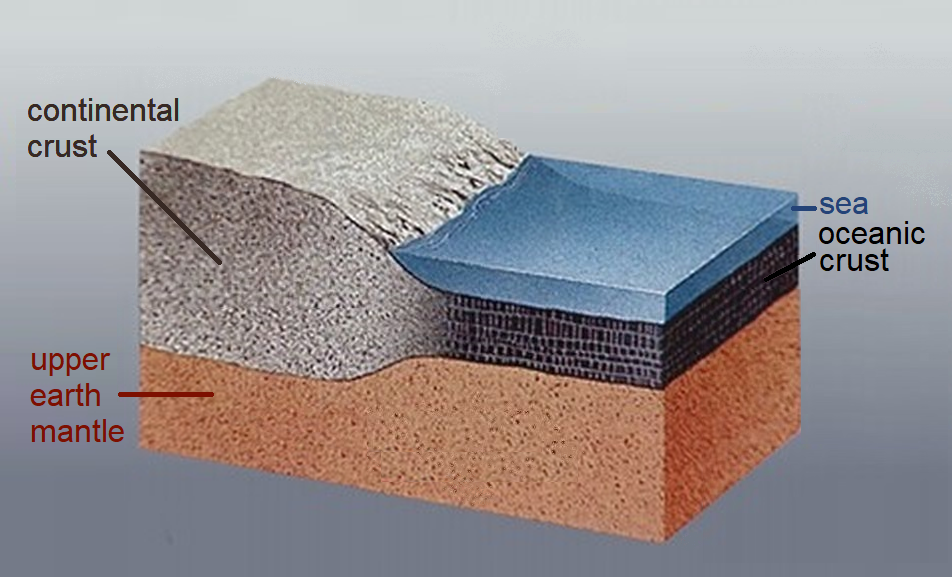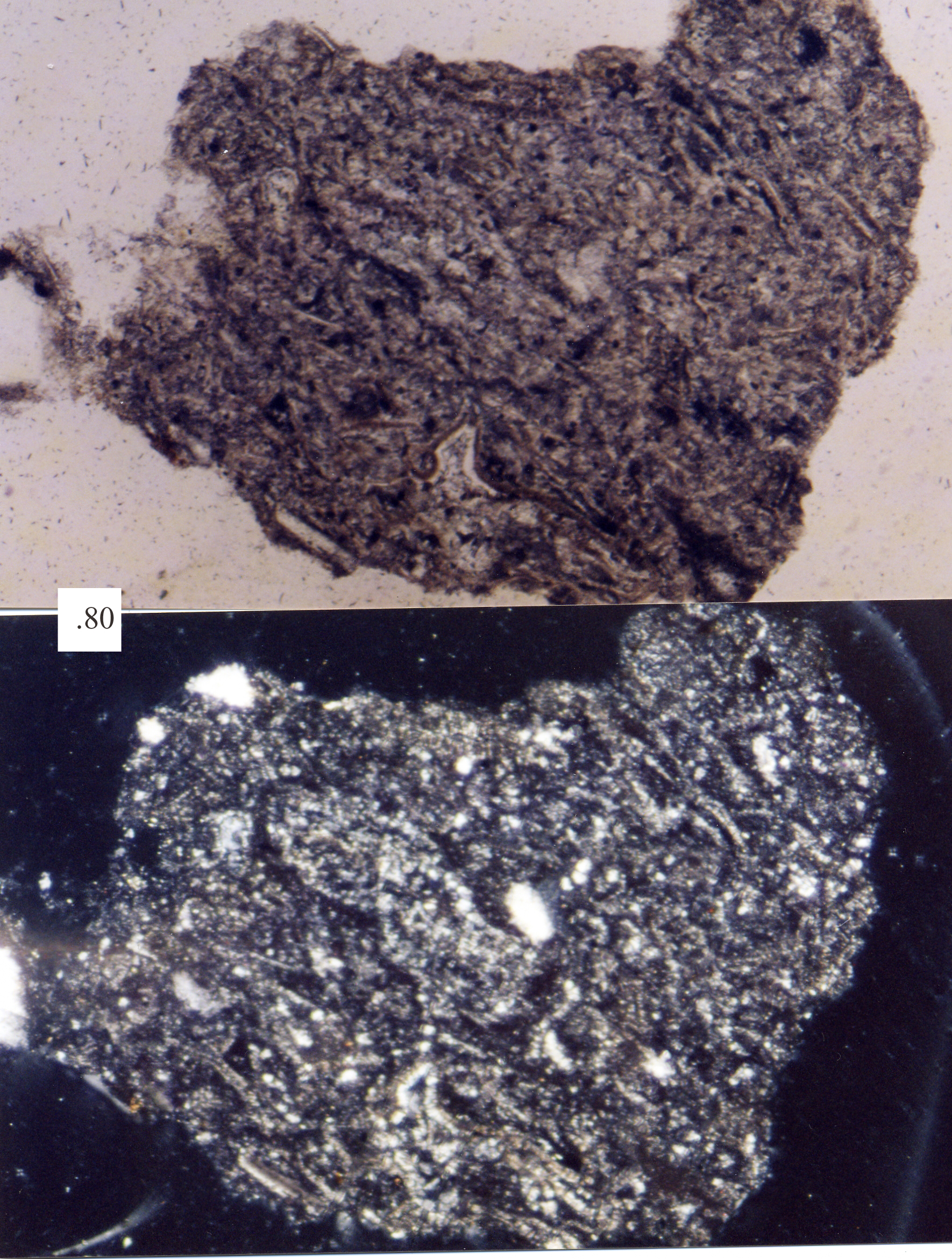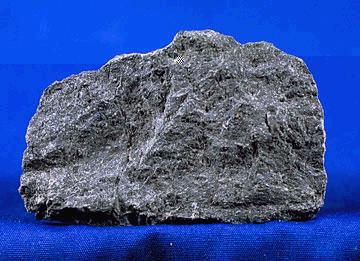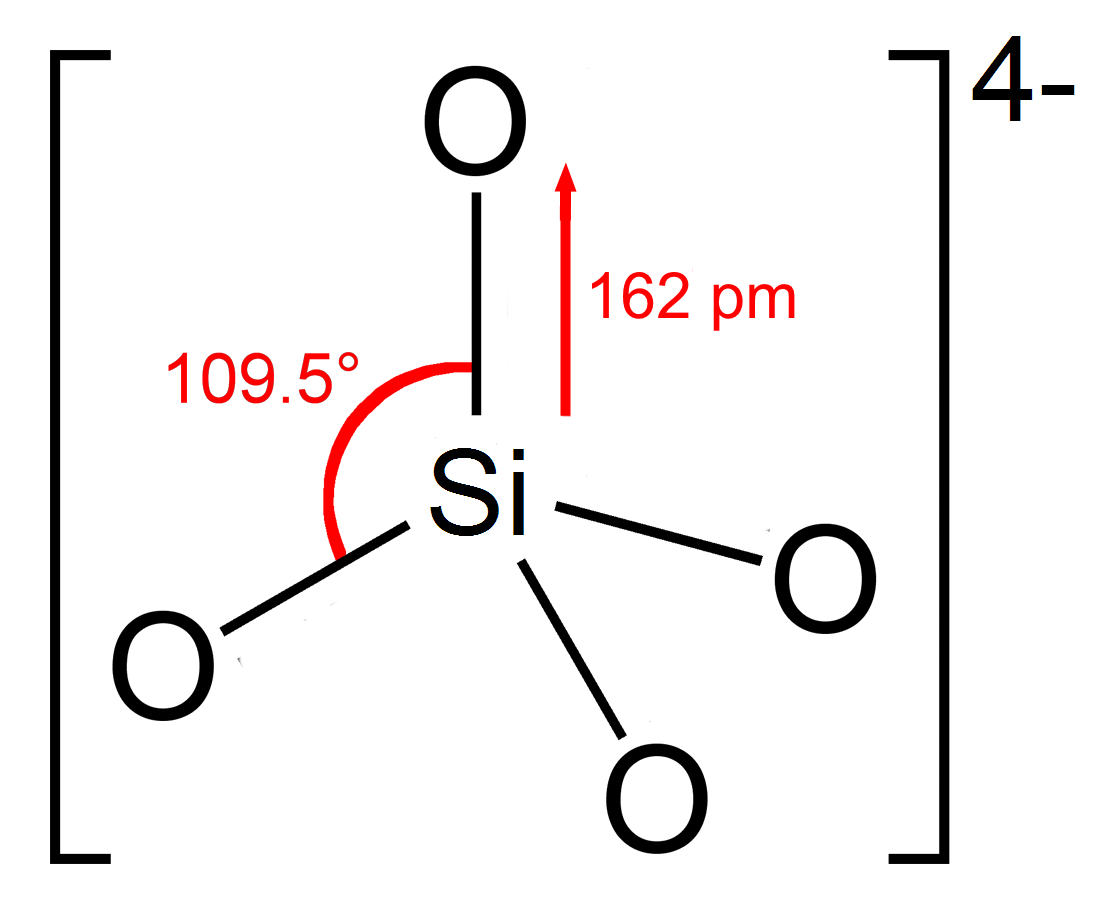|
Samarium–neodymium Dating
Samarium–neodymium dating is a radiometric dating method useful for determining the ages of rocks and meteorites, based on the alpha decay of the long-lived samarium isotope () to the stable radiogenic neodymium isotope (). Neodymium isotope ratios together with samarium–neodymium ratios are used to provide information on the age and source of igneous melts. It is sometimes assumed that at the moment when crustal material is formed from the mantle the neodymium isotope ratio depends only on the time when this event occurred, but thereafter it evolves in a way that depends on the new ratio of samarium to neodymium in the crustal material, which will be different from the ratio in the mantle material. Samarium–neodymium dating allows the determination of when the crustal material was formed. The usefulness of Sm–Nd dating stems from the fact that these two elements are rare earth elements and are thus, theoretically, not particularly susceptible to partitioning during se ... [...More Info...] [...Related Items...] OR: [Wikipedia] [Google] [Baidu] |
Radiometric Dating
Radiometric dating, radioactive dating or radioisotope dating is a technique which is used to Chronological dating, date materials such as Rock (geology), rocks or carbon, in which trace radioactive impurity, impurities were selectively incorporated when they were formed. The method compares the abundance of a naturally occurring Radionuclide, radioactive isotope within the material to the abundance of its Radioactive decay, decay products, which form at a known constant rate of decay. Radiometric dating of minerals and rocks was pioneered by Ernest Rutherford (1906) and Bertram Boltwood (1907). Radiometric dating is now the principal source of information about the Absolute dating, absolute age of rocks and other Geology, geological features, including the age of Paleontology, fossilized life forms or the age of Earth itself, and can also be used to date a wide range of natural and Artifact (archaeology), man-made materials. Together with stratigraphy, stratigraphic principles, ra ... [...More Info...] [...Related Items...] OR: [Wikipedia] [Google] [Baidu] |
Half-life
Half-life is a mathematical and scientific description of exponential or gradual decay. Half-life, half life or halflife may also refer to: Film * Half-Life (film), ''Half-Life'' (film), a 2008 independent film by Jennifer Phang * ''Half Life: A Parable for the Nuclear Age'', a 1985 Australian documentary film Literature * Half Life (Jackson novel), ''Half Life'' (Jackson novel), a 2006 novel by Shelley Jackson * Half-Life (Krach novel), ''Half-Life'' (Krach novel), a 2004 novel by Aaron Krach * Halflife (Michalowski novel), ''Halflife'' (Michalowski novel), a 2004 novel by Mark Michalowski * ''Rozpad połowiczny'' (), a 1988 award-winning dystopia novel by Edmund Wnuk-Lipiński Music *Half Life (3 album), ''Half Life'' (3 album) (2001) *Halflife (EP), ''Halflife'' (EP), an EP by Lacuna Coil and the title track *''Half-Life E.P.'', an EP by Local H * "Half Life", a song by 10 Years from ''The Autumn Effect'' * "Half Life", a song by Come from ''Near-Life Experience'' * "Ha ... [...More Info...] [...Related Items...] OR: [Wikipedia] [Google] [Baidu] |
Donald J
Donald is a Scottish masculine given name. It is derived from the Gaelic name ''Dòmhnall''.. This comes from the Proto-Celtic *''Dumno-ualos'' ("world-ruler" or "world-wielder"). The final -''d'' in ''Donald'' is partly derived from a misinterpretation of the Gaelic pronunciation by English speakers. A short form of Donald is Don, and pet forms of Donald include Donnie and Donny. The feminine given name Donella is derived from Donald. ''Donald'' has cognates in other Celtic languages: Modern Irish ''Dónal'' (anglicised as ''Donal'' and ''Donall'');. Scottish Gaelic ''Dòmhnall'', ''Domhnull'' and ''Dòmhnull''; Welsh '' Dyfnwal'' and Cumbric ''Dumnagual''. Although the feminine given name '' Donna'' is sometimes used as a feminine form of ''Donald'', the names are not etymologically related. Variations Kings and noblemen Domnall or Domhnall is the name of many ancient and medieval Gaelic kings and noblemen: * Dyfnwal Moelmud (Dunvallo Molmutius), legendary kin ... [...More Info...] [...Related Items...] OR: [Wikipedia] [Google] [Baidu] |
Continental Crust
Continental crust is the layer of igneous, metamorphic, and sedimentary rocks that forms the geological continents and the areas of shallow seabed close to their shores, known as '' continental shelves''. This layer is sometimes called '' sial'' because its bulk composition is richer in aluminium silicates (Al-Si) and has a lower density compared to the oceanic crust, called '' sima'' which is richer in magnesium silicate (Mg-Si) minerals. Changes in seismic wave velocities have shown that at a certain depth (the Conrad discontinuity), there is a reasonably sharp contrast between the more felsic upper continental crust and the lower continental crust, which is more mafic in character. Most continental crust is dry land above sea level. However, 94% of the Zealandia continental crust region is submerged beneath the Pacific Ocean, with New Zealand constituting 93% of the above-water portion. Thickness and density The continental crust consists of various layers, with ... [...More Info...] [...Related Items...] OR: [Wikipedia] [Google] [Baidu] |
Rhyolite
Rhyolite ( ) is the most silica-rich of volcanic rocks. It is generally glassy or fine-grained (aphanitic) in texture (geology), texture, but may be porphyritic, containing larger mineral crystals (phenocrysts) in an otherwise fine-grained matrix (geology), groundmass. The mineral assemblage is predominantly quartz, sanidine, and plagioclase. It is the extrusive equivalent of granite. Its high silica content makes rhyolitic magma extremely viscosity, viscous. This favors explosive eruptions over effusive eruptions, so this type of magma is more often erupted as pyroclastic rock than as lava flows. Rhyolitic ash-flow tuffs are among the most voluminous of continental igneous rock formations. Rhyolitic tuff has been used extensively for construction. Obsidian, which is rhyolitic volcanic glass, has been used for tools from prehistoric times to the present day because it can be shaped to an extremely sharp edge. Rhyolitic pumice finds use as an abrasive, in concrete, and as a soil ... [...More Info...] [...Related Items...] OR: [Wikipedia] [Google] [Baidu] |
Komatiite
Komatiite is a type of ultramafic mantle-derived volcanic rock defined as having crystallised from a lava of at least 18 wt% magnesium oxide (MgO). It is classified as a 'picritic rock'. Komatiites have low silicon, potassium and aluminium, and high to extremely high magnesium content. Komatiite was named for its type locality along the Komati River in South Africa, and frequently displays spinifex texture composed of large dendritic plates of olivine and pyroxene. Komatiites are rare rocks; almost all komatiites were formed during the Archaean Eon (4.03–2.5 billion years ago), with few younger (Proterozoic or Phanerozoic) examples known. This restriction in age is thought to be due to cooling of the mantle, which may have been hotter during the Archaean. The early Earth had much higher heat production, due to the residual heat from planetary accretion, as well as the greater abundance of radioactive isotopes, particularly shorter lived ones like uranium 235 which produ ... [...More Info...] [...Related Items...] OR: [Wikipedia] [Google] [Baidu] |
Felsic
In geology, felsic is a grammatical modifier, modifier describing igneous rocks that are relatively rich in elements that form feldspar and quartz.Marshak, Stephen, 2009, ''Essentials of Geology,'' W. W. Norton & Company, 3rd ed. It is contrasted with mafic rocks, which are richer in magnesium and iron. Felsic refers to silicate minerals, magma, and rock (geology), rocks which are enriched in the lighter elements such as silicon, oxygen, aluminium, sodium, and potassium. Molten felsic magma and lava is more viscosity, viscous than molten mafic magma and lava. Felsic magmas and lavas have lower temperatures of melting and solidification than mafic magmas and lavas. Felsic rocks are usually light in color and have specific gravity, specific gravities less than 3. The most common felsic rock is granite. Common felsic minerals include quartz, muscovite, orthoclase, and the sodium-rich plagioclase feldspars (albite-rich). Terminology Acid rock In modern usage, the term ''acid rock ... [...More Info...] [...Related Items...] OR: [Wikipedia] [Google] [Baidu] |
Ultramafic Rock
Ultramafic rocks (also referred to as ultrabasic rocks, although the terms are not wholly equivalent) are igneous and meta-igneous rocks with a very low silica content (less than 45%), generally >18% MgO, high FeO, low potassium, and are usually composed of greater than 90% mafic minerals (dark colored, high magnesium and iron content). Earth's mantle is composed of ultramafic rocks. Ultrabasic is a more inclusive term that includes igneous rocks with low silica content that may not be extremely enriched in Fe and Mg, such as carbonatites and ultrapotassic igneous rocks. Intrusive ultramafic rocks Intrusive ultramafic rocks are often found in large, layered ultramafic intrusions where differentiated rock types often occur in layers. Such cumulate rock types do not represent the chemistry of the magma from which they crystallized. The ultramafic intrusives include the dunites, peridotites and pyroxenites. Other rare varieties include troctolite which has a greater pe ... [...More Info...] [...Related Items...] OR: [Wikipedia] [Google] [Baidu] |
Mafic
A mafic mineral or rock is a silicate mineral or igneous rock rich in magnesium and iron. Most mafic minerals are dark in color, and common rock-forming mafic minerals include olivine, pyroxene, amphibole, and biotite. Common mafic rocks include basalt, diabase and gabbro. Mafic rocks often also contain calcium-rich varieties of plagioclase feldspar. Mafic materials can also be described as ferromagnesian. History The term ''mafic'' is a portmanteau of "magnesium" and "ferric" and was coined by Charles Whitman Cross, Joseph P. Iddings, Louis V. Pirsson, and Henry Stephens Washington in 1912. Cross' group had previously divided the major rock-forming minerals found in igneous rocks into ''salic'' minerals, such as quartz, feldspars, or feldspathoids, and ''femic'' minerals, such as olivine and pyroxene. However, micas and aluminium-rich amphiboles were excluded, while some calcium minerals containing little iron or magnesium, such as wollastonite or apatite, were included in t ... [...More Info...] [...Related Items...] OR: [Wikipedia] [Google] [Baidu] |
Silicate
A silicate is any member of a family of polyatomic anions consisting of silicon and oxygen, usually with the general formula , where . The family includes orthosilicate (), metasilicate (), and pyrosilicate (, ). The name is also used for any salt of such anions, such as sodium metasilicate; or any ester containing the corresponding chemical group, such as tetramethyl orthosilicate. The name "silicate" is sometimes extended to any anions containing silicon, even if they do not fit the general formula or contain other atoms besides oxygen; such as hexafluorosilicate . Most commonly, silicates are encountered as silicate minerals. For diverse manufacturing, technological, and artistic needs, silicates are versatile materials, both natural (such as granite, gravel, and garnet) and artificial (such as Portland cement, ceramics, glass, and waterglass). Structural principles In most silicates, a silicon atom occupies the center of an idealized tetrahedron whose cor ... [...More Info...] [...Related Items...] OR: [Wikipedia] [Google] [Baidu] |
The CHUR Model
''The'' is a grammatical Article (grammar), article in English language, English, denoting nouns that are already or about to be mentioned, under discussion, implied or otherwise presumed familiar to listeners, readers, or speakers. It is the definite article in English. ''The'' is the Most common words in English, most frequently used word in the English language; studies and analyses of texts have found it to account for seven percent of all printed English-language words. It is derived from gendered articles in Old English which combined in Middle English and now has a single form used with nouns of any gender. The word can be used with both singular and plural nouns, and with a noun that starts with any letter. This is different from many other languages, which have different forms of the definite article for different genders or numbers. Pronunciation In most dialects, "the" is pronounced as (with the voiced dental fricative followed by a schwa) when followed by a con ... [...More Info...] [...Related Items...] OR: [Wikipedia] [Google] [Baidu] |







